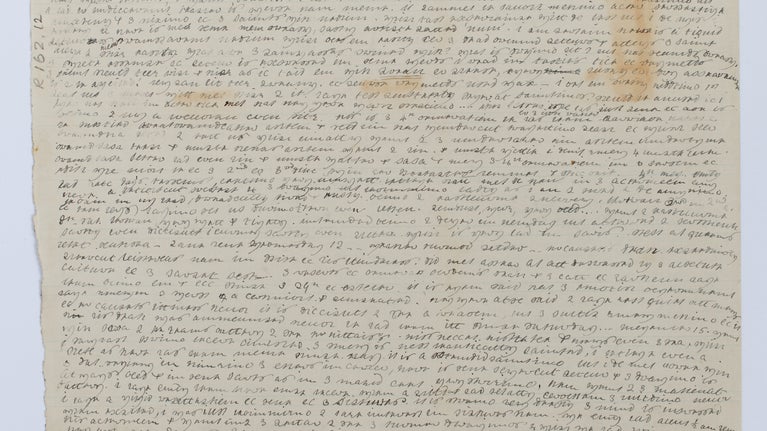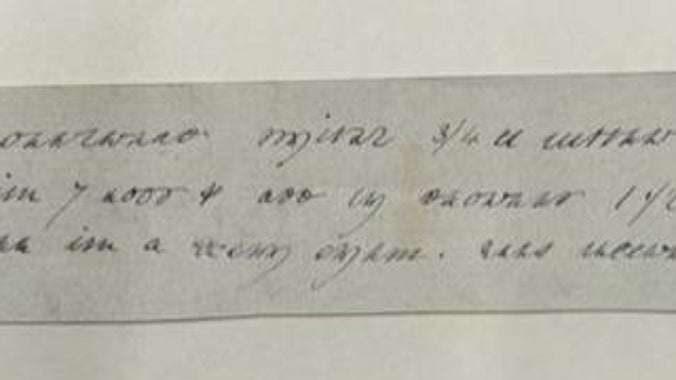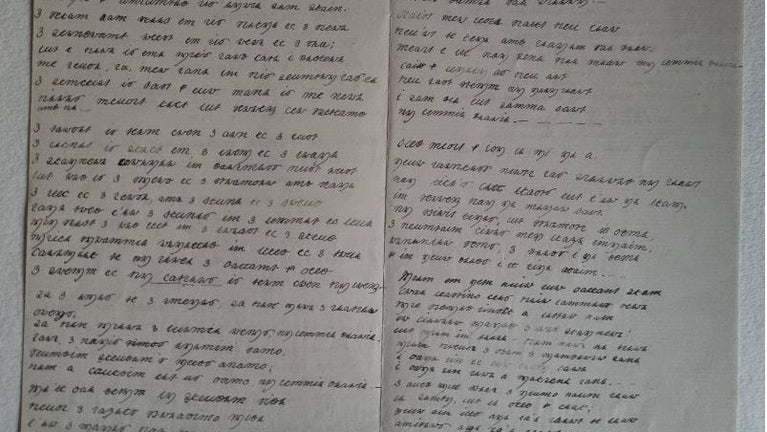Cracking Beatrix’s Coded-Writing
- Published:
- 20 June 2025

On display at Hill Top for the first time are several pieces of Beatrix Potter’s code-writing. See the transcripts of these pieces, originally written on scraps of paper by Beatrix.
Beatrix Potters Code-writing
From ages 15 to 30, Beatrix Potter kept coded journals, using an invented coded cypher system, which were stored in her desk at Hill Top. Now, on display for the first time are several pieces of Beatrix’s code-writing transcribed by Hollie who works in the collections team at Hill Top.
Years after Beatrix’s death the papers were found and given to the scholar and collector Leslie Linder to decipher. He spent six years trying to crack the code, which he successfully did in 1958 and went on to publish The Journal of Beatrix Potter (1966).
New transcriptions
There are still several loose pages and scraps of paper by Beatrix, which Linder did not translate. Hollie was asked to try to determine themes of the writing for the 2025 display. She was able to follow in Leslie Linder’s footsteps to translate and transcribe Beatrix’s hidden notes.
One of the first challenges she faced during this process was not being able to find these texts in Leslie Linder's translations of Beatrix’s code writing. For example, one piece of code is an American gingerbread recipe, but she could not find any reference to ‘gingerbread’ or even ‘recipe’ in Leslie Linder’s work or Beatrix’s writings to find the rest of the translation. It is unclear whether Linder did not include all translations in his publications or if some code writing – particularly small scraps of paper – were missed during his translation project. It is fascinating to consider that there may still be written work by Beatrix Potter that have been left undeciphered all these years.
Thankfully, to aid the translation of the gingerbread recipe, Linder included a code alphabet showing the letter-by-letter translation. This allowed Hollie to fully transcribe the recipe.
If you would like to attempt Beatrix’s American Gingerbread, here is the recipe:
"American Gingerbread switch 3/4lb butter and 1 ½ fine sugar together. Break in 1 eggs and add by degrees 1 ½ flour and 3oz ginger and mix well and bake in a slow oven. Keep before it is eaten”

Scottish poems
Another sheet of code writing featured various Scottish poems. The code writing of the Scottish poems could have been written after being inspired by a family holiday to Perthshire in 1893 and features the poems, ‘Flora Macdonald’s Lament’ by James Hogg, ‘Ca the Yowes (Hark! The Marvis)’ by Robert Burns and ‘Good Night, And Jou Be Wi’ Ye A’ by Alexander Boswell. Interestingly, it is not secret thoughts and messages Beatrix chose to note down but rather, well known Scottish verses and prose. It is possible that she was merely using these poems to practice her code-writing. Visitors can read these poems too on a visit to Hill Top.
Challenges of the project
Although Linder’s alphabet translation was incredibly useful, particularly for clearly written code – the gingerbread recipe and selection of poems - other pieces of code are too difficult to decipher, even with Linder’s instruction.
Through some research into the various pieces of code writing in our collection, it appears that as Beatrix became more proficient and confident in her new language, the more the letters appear to merge and become more difficult to translate.
In later years, Beatrix herself struggled to decipher her own code-writings. In a letter dated 15 November 1943, to her cousin, Caroline Clark, Beatrix wrote that she used “a kind of cipher shorthand which I am now unable to read even with a magnifying glass”.
There are still many more pieces of code that may not have been fully deciphered and could offer new insights into Beatrix’s life and interests.
